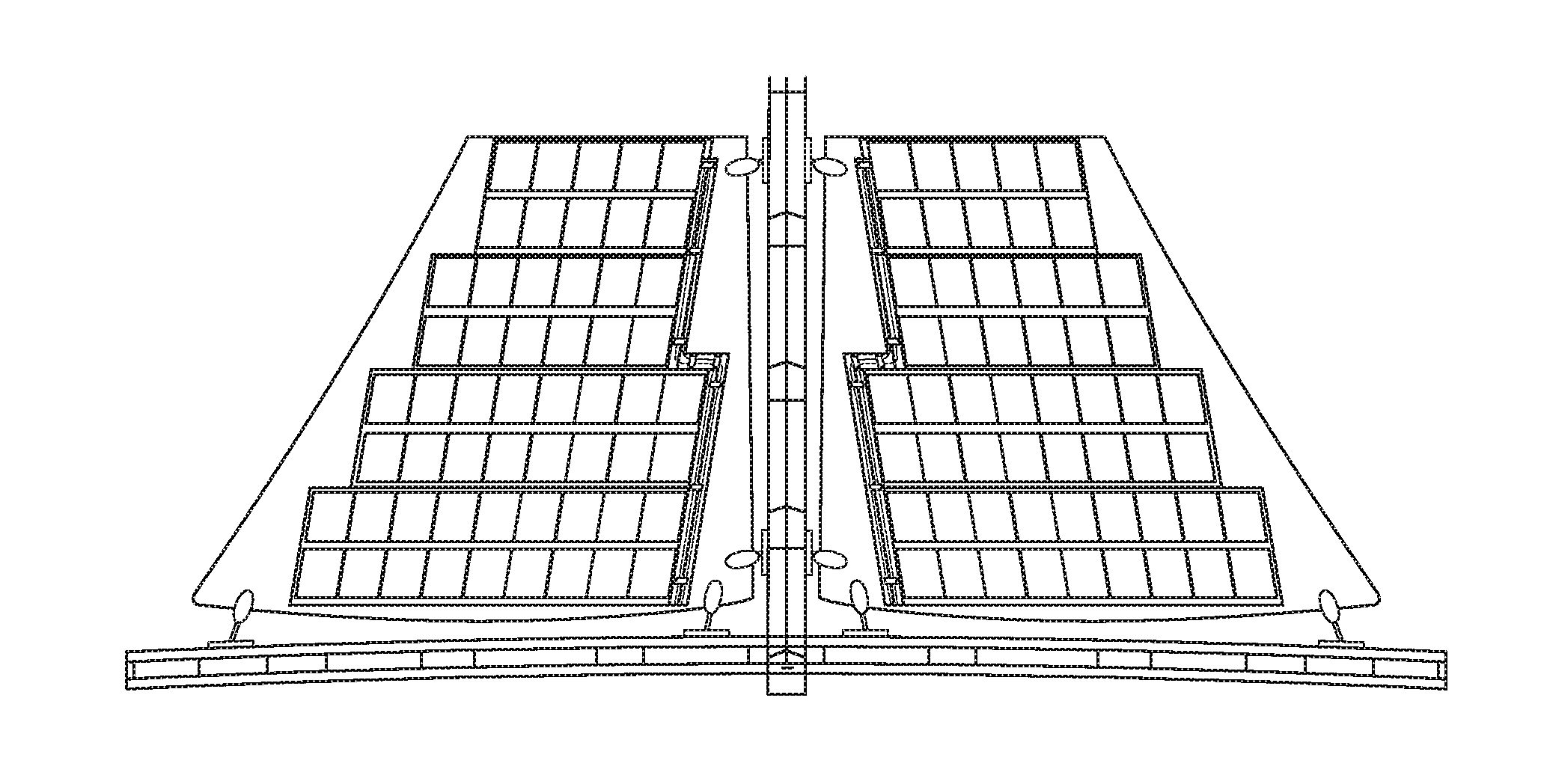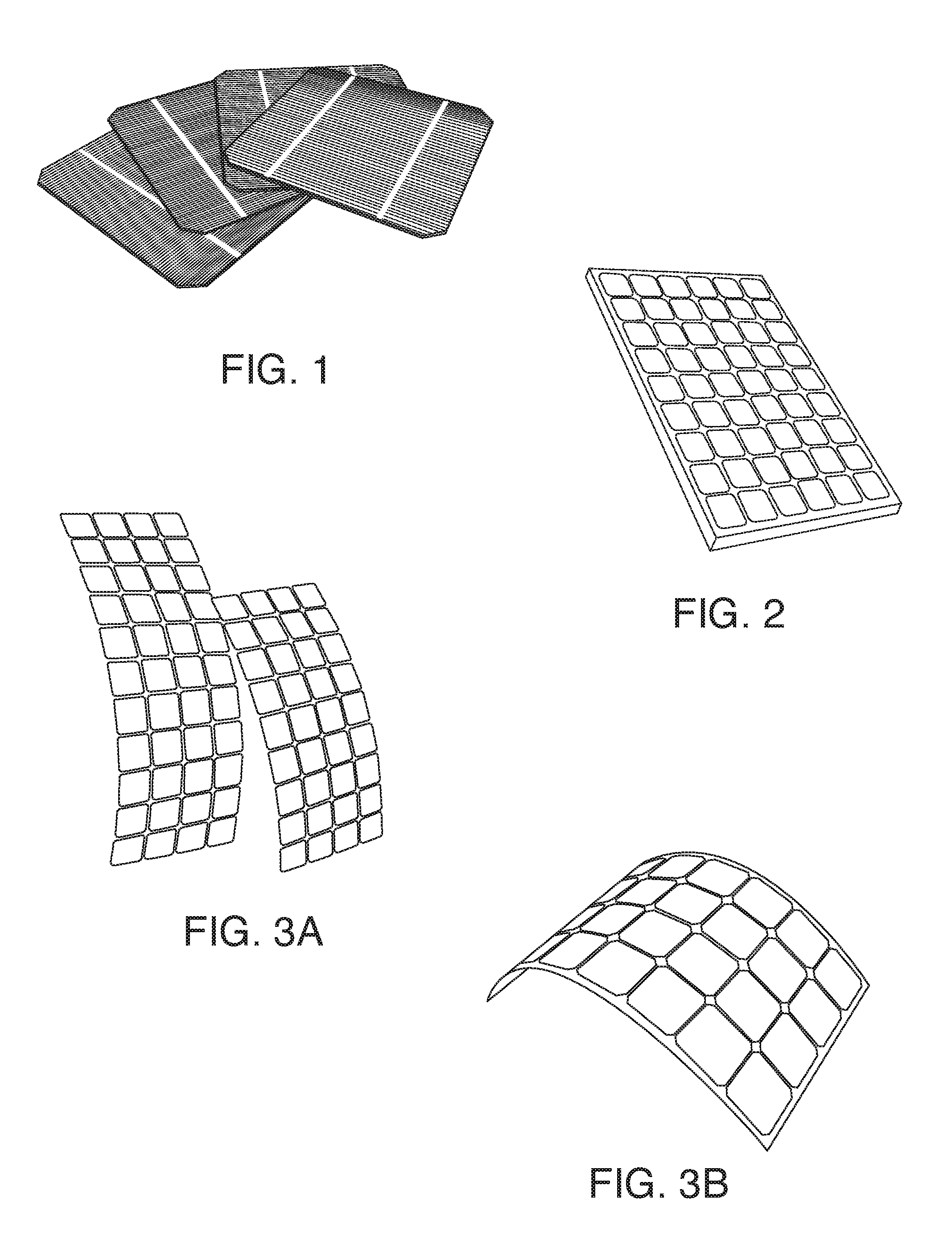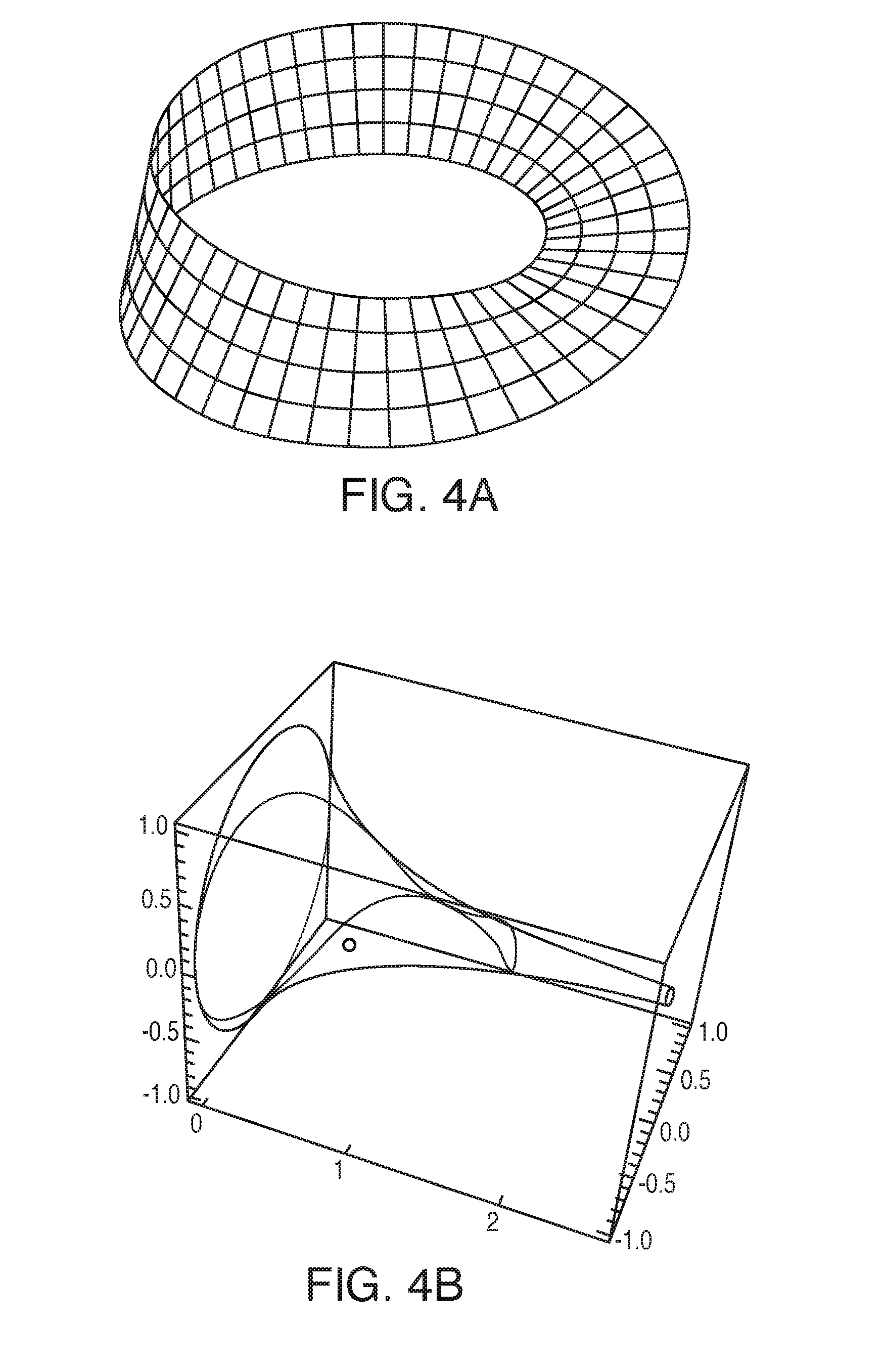Methods and apparatus for structurally supporting geometrically complex solar modules using a rigid substrate and point support connections
a technology of geometrically complex solar modules and rigid substrates, applied in electrical apparatus, photovoltaics, semiconductor devices, etc., can solve the problems of limiting architects and builders in their design choices, affecting the efficiency of solar panels, and affecting the aesthetics of systems, so as to achieve high efficiency and high efficiency
- Summary
- Abstract
- Description
- Claims
- Application Information
AI Technical Summary
Benefits of technology
Problems solved by technology
Method used
Image
Examples
Embodiment Construction
[0023]According to some embodiments, the geometrically complex solar panels disclosed herein may include a custom manufactured rigid shell that can serve as a platform for flexible solar cells, which are preferably monocrystalline, though use other types of flexible solar cells (e.g. polycrystalline) is explicitly contemplated. The shell can have a mounting surface designed to be conformable to architects' and builders' design needs while at the same time offering the stability required to support monocrystalline panels safely. This conformity includes the planar geometry of the platform which may be a rectangle, a square, a circle or oval, a polygon, or an irregular shape, for example. FIGS. 4A-40 depict exemplary views of various topologies and surfaces for geometrically complex solar panels, in accordance with some embodiments
[0024]In some embodiments, the geometrically complex solar panels can be made of a conformable material such as aluminum, steel, acrylic, polycarbonate, woo...
PUM
 Login to View More
Login to View More Abstract
Description
Claims
Application Information
 Login to View More
Login to View More - R&D
- Intellectual Property
- Life Sciences
- Materials
- Tech Scout
- Unparalleled Data Quality
- Higher Quality Content
- 60% Fewer Hallucinations
Browse by: Latest US Patents, China's latest patents, Technical Efficacy Thesaurus, Application Domain, Technology Topic, Popular Technical Reports.
© 2025 PatSnap. All rights reserved.Legal|Privacy policy|Modern Slavery Act Transparency Statement|Sitemap|About US| Contact US: help@patsnap.com



